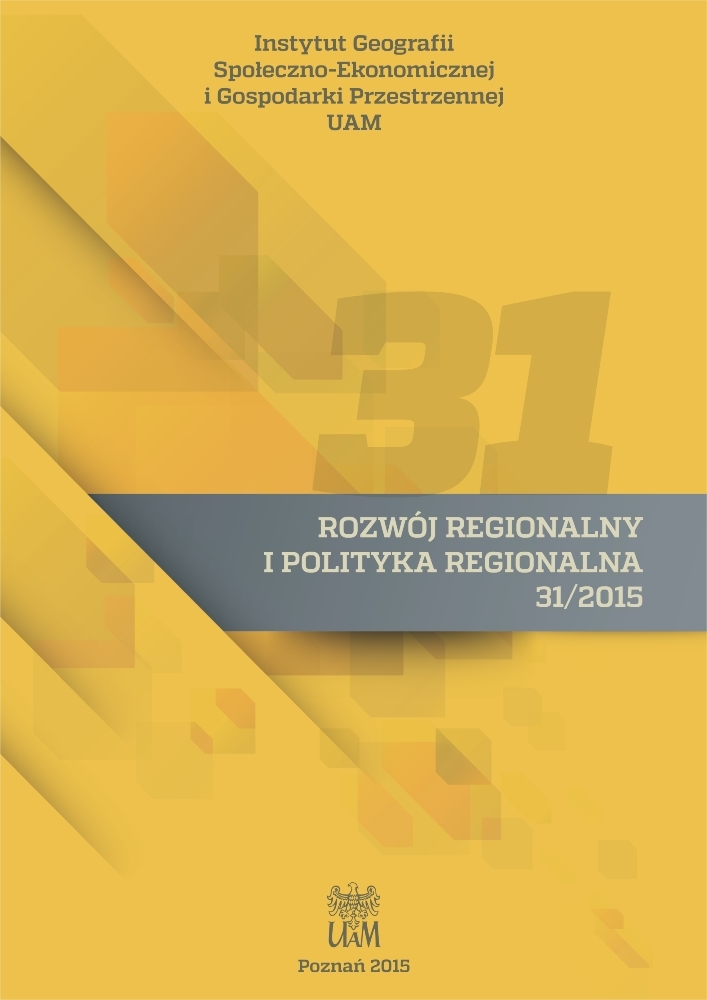Abstract
The main aim of this paper is to discuss the role of tourist in the spatial and social structures of the modern large Polish cities. Following questions were formulated: what areas of activity and ways of activity tourists choose in the city? What image of the city in the minds of tourists remain after leaving? What kind of attitudes have residents the tourists? Is conflict possible between them? Presented results provoke to conclusion that contemporary city is indeed changing under tourist influence. However these changes don’t have to be negative. Tourists entrance to the city can provoke to development of city districts and to improve everyday life of their residents.References
Ashwort G., Page S.J. 2011. Urban tourism research: recent progress and current paradoxes. Tourism Management, 32: 1–15. DOI: https://doi.org/10.1016/j.tourman.2010.02.002
Denzin N.K. 1978. The research act: A theoretical introduction to sociological methods. McGraw-Hill, New York.
Denzin N.K., Lincoln Y.S. (red.) 1994. Handbook of Qualitative Research. Sage, Thousand Oaks.
http://www.eiu.com/public/topical_report.aspx?campaignid=Liveability2014 (dostęp: 7.03.15)
http://www.melbourne.vic.gov.au/AboutMelbourne/Statistics/Pages/DailyPopulation.aspx (dostęp: 7.03.15)
http://www.melbourne.vic.gov.au/Pages/default.aspx (dostęp: 7.03.15).
Jacobs J. 1961. The Death and Life of Great American Cities. Random House, New York.
Judd D.R. 1999. Constructing the Tourist Bubble. [W:] D.R. Judd, S.S. Fainstein (red.), The Tourist City. Yale University Press, New Haven, CT, s. 35–53.
Judd D.R. 2003. Visitors and Spatial Ecology of the City. [W:] L.M. Hoffman, S.S. Fainstein, D.R. Judd (red.), Cities and Visitors. Blackwell, Oxford–Malden, s. 23–39. DOI: https://doi.org/10.1002/9780470773673.ch1
Judd D.R., Fainstein S.S. 1999. Cities as Places to Play. [W:] D.R. Judd, S.S. Fainstein (red.), The Tourist City. Yale University Press, New Haven, CT, s. 261–272.
Kowalczyk A. 2001. Geografia turyzmu. Wydawnictwo Naukowe PWN, Warszawa.
Madurowicz M. 2008. Kto jest turystą w wielkim mieście? Poszukiwania badawcze. [W:] A. Kowalczyk (red.), Turystyka kulturowa. Uniwersytet Warszawski, s. 59–84.
Martinotti G.1996. Four Populations: Human Settlements and Social Morphology in Contemporary Metropolis. European Review, 4, 1: 1–21. DOI: https://doi.org/10.1002/(SICI)1234-981X(199601)4:1<3::AID-EURO116>3.0.CO;2-K
Novy J. 2011. Marketing Marginalized Neighborhoods. Tourism and Leisure in the 21st Century Inner City. Columbia University, New York.
Włodarczyk B. 2006. Przestrzeń turystyczna – cykliczność, „aktorzy”, determinanty rozwoju. Turyzm, 16, 2: 41–64. DOI: https://doi.org/10.18778/0867-5856.16.2.05
License
Copyright
© 2015 IGSEiGP, Uniwersytet im. Adama Mickiewicza w Poznaniu
OPEN ACCESS
